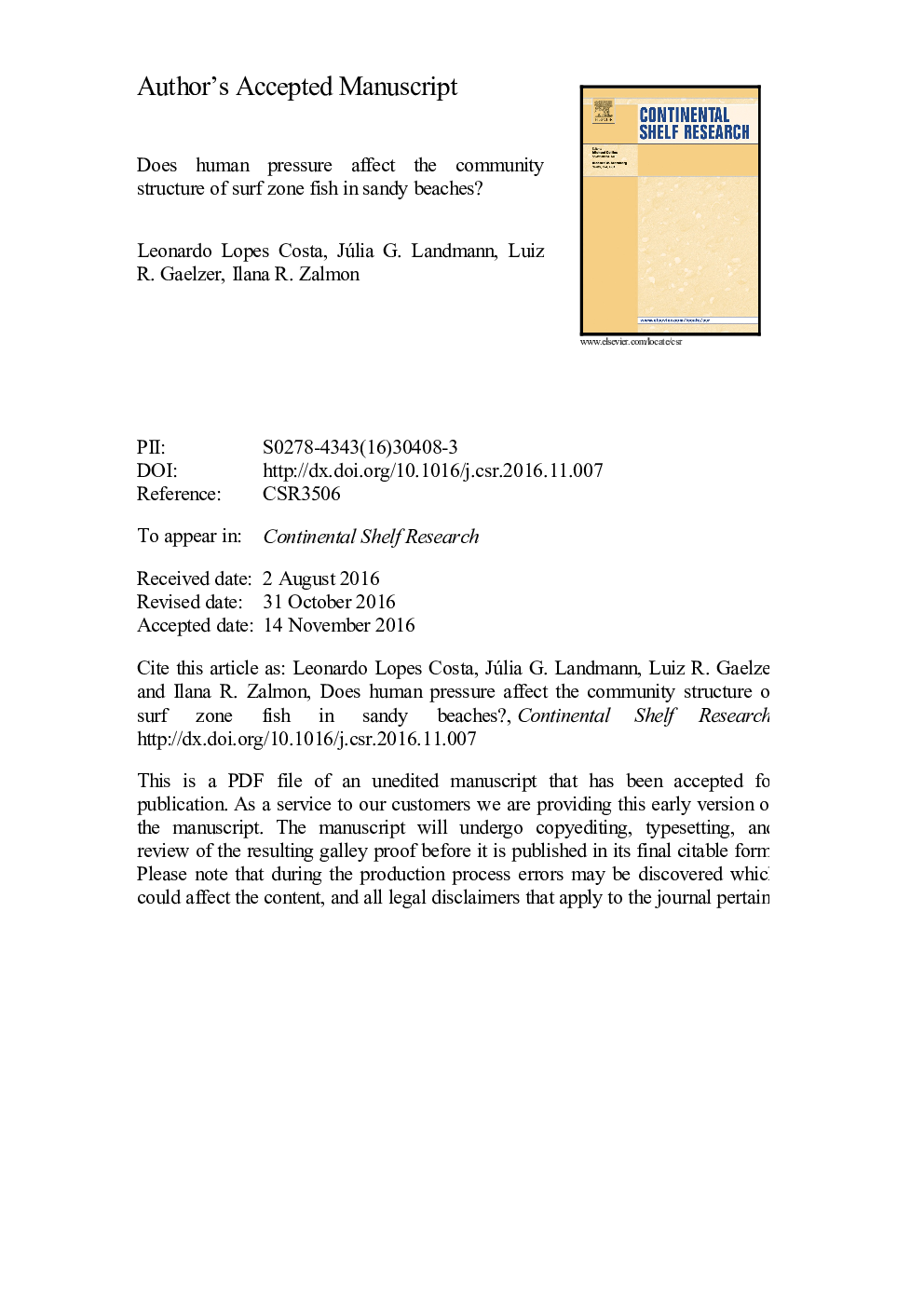| Article ID | Journal | Published Year | Pages | File Type |
|---|---|---|---|---|
| 5764505 | Continental Shelf Research | 2017 | 28 Pages |
Abstract
Intense tourism and human activities have resulted in habitat destruction in sandy beach ecosystems with negative impacts on the associated communities. To investigate whether urbanized beaches affect surf zone fish communities, fish and their benthic macrofaunal prey were collected during periods of low and high human pressure at two beaches on the Southeastern Brazilian coast. A BACI experimental design (Before-After-Control-Impact) was adapted for comparisons of tourism impact on fish community composition and structure in urbanized, intermediate and non-urbanized sectors of each beach. At the end of the summer season, we observed a significant reduction in fish richness, abundance, and diversity in the high tourist pressure areas. The negative association between visitors' abundance and the macrofaunal density suggests that urbanized beaches are avoided by surf zone fish due to higher human pressure and the reduction of food availability. Our results indicate that surf zone fish should be included in environmental impact studies in sandy beaches, including commercial species, e.g., the bluefish Pomatomus saltatrix. The comparative results from the less urbanized areas suggest that environmental zoning and visitation limits should be used as effective management and preservation strategies on beaches with high conservation potential.
Related Topics
Physical Sciences and Engineering
Earth and Planetary Sciences
Geology
Authors
Leonardo Lopes Costa, Júlia G. Landmann, Luiz R. Gaelzer, Ilana R. Zalmon,
